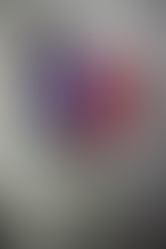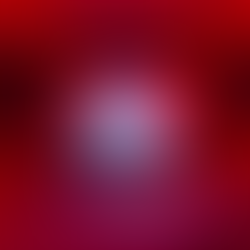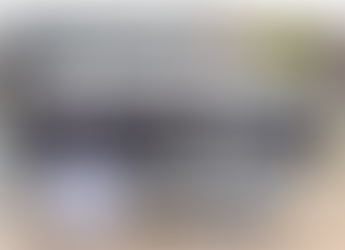Interview with Brendan Barry
- Rodolfo Felici

- 2 mag 2020
- Tempo di lettura: 7 min
Aggiornamento: 28 set 2020
Brendan Barry is a photographer, educator and camera builder whose creative photographic practice combines elements of construction, education, performance and participation. He turned almost anything from a skyscraper to a pineapple into a camera.
How was your love for photography born? At what age did you build your first camera? I’ve been interested in photography since about as early as I can remember, it always seemed to make sense to me. The combination of the technical and expressive nature and possibilities of the medium attracted me from a young age and has never gone away. I, like most people who study photography in some form, had made pinhole cameras but I didn’t build my first ‘proper’ camera (i.e. with a lens) until 3 or 4 years ago. When I was young I used to take apart all my toys and rebuild them into Frankenstein esq creations. I also loved building treehouses and dens so making my own camera just seemed like the obvious thing to do.
Could you tell us about your "shipping container camera" project? How the "largest, slowest and least practical Polaroid in the world" was born and how it works? How is equipped the darkroom inside? Is it an evolution of the Caravan Camera? The shipping container is indeed an evolution of the caravan camera. I wanted too create something that was bigger and therefore could fit more people in and also a camera that was wheelchair accessible. The project was funded by the Arts Council England, for which I placed it in a public garden in Exeter where I live and over a three week period engaged and collaborated with a broad range of audiences from a variety of backgrounds. Groups with special learning needs, hearing impairment, challenging behavioural issues and/or mental ill health, students, academics and enthusiasts, as well as other creative practitioners and members of the public. The camera is solar powered, has a moveable front wall to allow access and I also constructed a rudimentary print washing system inside so I could wash, hang and dry the images quicker.
How do you move the container to the place where you planned to take a photo? You need a lorry with a crane to pick it up and move it so it’s a bit of a task to get it to new places!
How do you find the Harman Direct Positive paper in the large format you use for your work? I guess it's hard to find it in a regular photo shop. Do you buy it directly from Ilford? Yes I buy it from Ilford. It comes in all sorts of sizes and giant rolls too which I have been working with a lot recently.
Only considering the cost of chemicals and paper, how much could a 36x44 "print cost in 2020? Oh god, I don’t know! You’d have to find out what a roll of paper in that size costs and then work and it out from there. And it depend of course on what paper you’re using and how much you pay for it. The chemicals aren’t too expensive, and you’re only using small amounts each time you fill up your trays / troughs.
When did you start to think that even a pineapple, a pumpkin or a loaf of bread could turn into a camera, and why? It all started with a bin years ago. I was making pinhole cameras with my students at college out of shoe boxes and I saw the bin in the darkroom. It had a lid just like the shoe box so I realised I could use that in the same way. After that I just started to look at things and think ‘you could make a camera out of that’, so I would. There’s not much of an explanation to this I’m afraid, and if I try to force it, i.e. if I try to think of something to make a camera out of, it never can, they always come naturally.
Most photographers have a visceral passion for their work tools, perhaps even excessive at times. We often forget that cameras are primarily tools for creating images, and we end up giving too much importance to the tool. I have the impression that part of your research is aimed precisely at trying to transcend the photographic instrument, and another part aim to know it better. I'm right? Yeah, the instrument itself isn’t the important thing, it’s how you use it of course. Having a good camera won’t make you a good photographer, in the same way that having a really good guitar won’t make you a good musician.You can create amazing images with a shitty old point and shoot camera, and awful ones with a top of the range DSLR.
I think it’s all about what you want to do with it and what you want to say/show/tell. My car needs to be big as I carry lots of stuff round in it. It needs to be safe as I have a young child and it needs to be fairly economical for when I go on long journeys. I don’t care what it looks like and I don’t care how fast it goes. A brand new sports car is of absolutely no use to me.
But it will be to some people and my car they wouldn’t touch with a barge pole. I care about practicality - does this thing do the job that I want it to do and if so great. So I build my cameras to do what I want them to do. The shipping container is a good example of this, it needed to be big and secure, the fact that it is slow to use doesn’t matter at all. But a sports photographer would obviously not use it! A super long and fast lens is pretty essential for most modern sports photographers, but once you have it and you know how to use it, what you capture with it matters the most. For me also though, the creation of the camera is part of the work and as important and valid as the creation of the image, it’s certainly as fun and satisfying! Could you tell us how The Skyscraper Camera Project was born? How long did it take to organize the event and what difficulties did you have to overcome? The huge prints you got are beautiful. Is it possible to admire them somewhere? I got an email one day asking me if I would like too turn a skyscraper in midtown Manhattan into a giant camera. Four or five weeks later I was on a plane to New York! There were countless challenges to overcome. All of my equipment needed to be shipped out there. Specialist troughs big enough to accommodate the paper needed to be fabricated. We had to plump in a giant darkroom sink, black out a 27,000 sq ft space with 160 windows and create custom lens mounts and a giant paper holder. We needed a way to wash, hang and dry the prints as well as a system to contact print negatives of that size. But this was all part of it. Finding novel solutions to problems is one of the most interesting and rewarding parts of working in this way. The prints are currently in storage in New York but I am working ion getting them back and doing something with them.
Has photography allowed you to meet people, to travel, and has it opened unexpected doors? Absolutely. Photography is a passport to experience. It is the thing that is responsible for all my most fulfilling and rewarding creative and professional experiences. It has led me all over the world and introduced me to the most interesting people. It’s basically an excuse to do cool things. Could you tell us about Positive Light Projects? Positive Light Projects a not for profit organisation I set up that uses photography to engage and inspire a diverse range of audiences and communities as well as developing emerging photographers and aiding them in moving their practise forward in exciting and innovative ways. Through it I run The Dartmoor Summer School of Photography and am in the process of setting up an artist led studio space. It’s a place where projects can develop from and another excuse to do cool things!
What fascinates you about large format photography and Direct Positive paper? Have you ever considered using medium or small format cameras? I like how working with large format slows you down and makes you think more about what you are taking. The images tend to be a bit more formal and considered, which I appreciate and you have a lot more control over what you are doing. You can’t really describe the quality of the direct positive paper, especially when you are working with it at a bigger scale. It has the ability to register more in a print than you can see with your eye, so they have this really uncanny, almost unsettling feeling to them, in a good way. You need to see it to believe it. I used to shoot 35mm and then medium format. Now that I think about it, over the years I have simply used larger and larger formats. I think it goes back to the challenges thing. It is a lot harder to make a photograph that is 8 x 4 ft than it is to shoot a roll of 35mm film (from a technical perspective) and I enjoy the challenges involved in that. How do you keep your prints and do you archive it? I guess you will need a lot of space.
Its a mess! Piles of boxes and stack of tubes in various places in no particular order. I tend to fall out of love with the images I create shortly after I’ve made them so am not very good at taking care of this side of things. I should probably get better! Are you working at some project in your home in these strange days? I’ve just turned my shed into a camera and darkroom and have been making videos on the various processes and approaches use. Making videos is totally new to me, so of course very challenging, so I’m having lots of fun with it! You can see a bunch of them here.
Sito web: https://brendanbarry.co.uk/
Instagram: https://www.instagram.com/brendanbarryphoto/




































































































Commenti